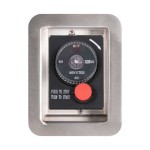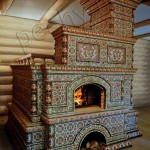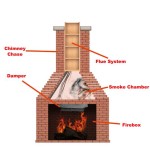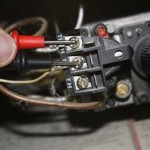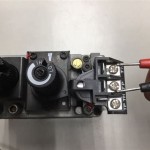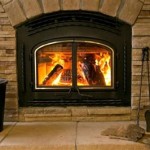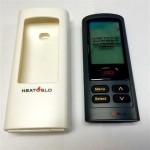Gas Fireplace Warehouse: A Comprehensive Guide
Gas fireplaces have become increasingly popular as a convenient and efficient alternative to traditional wood-burning fireplaces. A gas fireplace warehouse serves as a central location for the acquisition of these appliances, offering a diverse selection of models, components, and accessories. Understanding the offerings and considerations when engaging with a gas fireplace warehouse is crucial for both homeowners and contractors seeking to install or upgrade heating systems.
A gas fireplace warehouse typically stocks a wide range of gas fireplaces, including direct vent, vent-free, and insert models. These fireplaces differ in their venting requirements, installation procedures, and efficiency ratings. Warehouses also carry essential components such as gas logs, burners, remote controls, and decorative fronts to customize the fireplace's appearance and functionality.
Understanding the Types of Gas Fireplaces Available
Gas fireplaces are not a one-size-fits-all solution. Different types exist, each with distinct characteristics and applications. Knowing these differences is essential when choosing the appropriate fireplace from a warehouse.
Direct Vent Gas Fireplaces: Direct vent fireplaces are sealed combustion systems that draw air from outside the home and exhaust combustion gases directly outdoors through a dedicated vent pipe. This design prevents indoor air from being used for combustion, leading to improved energy efficiency and reduced risk of carbon monoxide poisoning. Direct vent systems offer design flexibility, as the vent pipe can exit horizontally or vertically. They are generally considered the safest and most efficient type of gas fireplace and are a common choice for new construction and renovations. Due to their sealed nature, they maintain indoor air quality by preventing drafts and minimizing heat loss.
Vent-Free Gas Fireplaces: Vent-free (also known as ventless) gas fireplaces do not require a vent pipe or chimney. They use room air for combustion and release combustion gases directly into the living space. These fireplaces feature oxygen depletion sensors (ODS) that automatically shut off the unit if oxygen levels in the room become too low. While vent-free fireplaces offer installation flexibility and can be placed virtually anywhere in a room, they require careful consideration due to potential safety concerns. It's essential to ensure adequate ventilation in the room where a vent-free fireplace is installed and to adhere strictly to manufacturer's guidelines. Some jurisdictions have restrictions or prohibitions on the use of vent-free appliances. Regular maintenance and carbon monoxide detection are crucial when utilizing a vent-free gas fireplace.
Gas Fireplace Inserts: Gas fireplace inserts are designed to fit into existing masonry fireplaces, converting them into efficient gas-burning systems. Inserts typically feature a sealed combustion chamber and a direct vent system that is routed up the existing chimney. They offer a cost-effective way to upgrade an inefficient wood-burning fireplace while maintaining the traditional aesthetic. Inserts come in various sizes and styles to fit different fireplace openings. Professional installation is recommended to ensure proper venting and gas connection.
B-Vent Gas Fireplaces: B-vent gas fireplaces utilize a natural draft venting system that relies on the buoyancy of hot combustion gases to exhaust them through a vertical vent pipe (B-vent). These fireplaces are less efficient than direct vent models, as they use room air for combustion and can create a negative pressure environment in the home. They typically require an existing chimney or a dedicated B-vent pipe. B-vent systems are generally less expensive to install than direct vent systems, but they may not be suitable for all homes due to venting limitations and energy efficiency concerns.
Factors to Consider When Choosing a Gas Fireplace
Selecting the appropriate gas fireplace involves considering several factors to ensure optimal performance, safety, and satisfaction. These factors range from heating requirements to aesthetic preferences and budget constraints.
Heating Needs: It's crucial to determine the appropriate BTU (British Thermal Unit) output of the fireplace based on the size of the room and the desired heating level. Over sizing a fireplace can lead to uncomfortable temperatures and wasted energy, while undersizing it may not provide sufficient heat. Consult with a qualified HVAC professional to assess heating requirements and recommend an appropriate BTU rating. Consider the fireplace as a supplemental heating source rather than relying on it as the primary heat source for the entire home.
Venting Requirements: As previously discussed, different types of gas fireplaces have different venting requirements. Direct vent systems offer the most flexibility and safety, while vent-free systems require careful consideration of ventilation. B-vent systems rely on existing chimneys or dedicated B-vent pipes. Evaluate the available venting options in the home and choose a fireplace that is compatible with the existing infrastructure or allows for feasible installation of a new venting system. Adherence to local building codes and manufacturer's guidelines is essential.
Aesthetic Preferences: Gas fireplaces are available in a wide variety of styles and finishes to complement different interior designs. Consider the overall aesthetic of the room and choose a fireplace that matches the existing décor. Options include traditional log sets, contemporary glass media, and various decorative fronts and surrounds. Some fireplaces offer adjustable flame height and ember bed intensity to customize the ambiance. Visit the gas fireplace warehouse to view different models and options in person.
Efficiency Ratings: Gas fireplaces are rated for efficiency based on their Annual Fuel Utilization Efficiency (AFUE). AFUE indicates the percentage of fuel energy that is converted into usable heat. Higher AFUE ratings indicate more efficient fireplaces, leading to lower energy bills. Direct vent fireplaces typically have higher AFUE ratings than vent-free or B-vent models. Consider the long-term cost savings associated with a more efficient fireplace and choose a model that balances efficiency with other factors such as price and aesthetic appeal.
Budget: Gas fireplaces range in price from several hundred dollars to several thousand dollars, depending on the type, size, features, and brand. Establish a budget before visiting the gas fireplace warehouse and focus on models that fall within the price range. Factor in the cost of installation, venting materials, and accessories. Obtaining multiple quotes from different installers can help ensure a competitive price. Consider financing options or rebates offered by the warehouse or utility companies to make the purchase more affordable.
Navigating a Gas Fireplace Warehouse
Successfully navigating a gas fireplace warehouse requires preparation and a clear understanding of the needs and preferences. Asking the right questions and utilizing the resources available can significantly simplify the selection process.
Consulting with Sales Representatives: Warehouse sales representatives are valuable resources for information and guidance. These representatives can help explain the different types of fireplaces, compare features and benefits, and recommend models that meet specific needs. Prepare a list of questions to ask the sales representative, including inquiries about warranty information, installation requirements, and maintenance procedures. Be upfront about the budget constraints and desired features to help the representative narrow down the options.
Examining Models and Displays: Gas fireplace warehouses typically have a variety of models on display, allowing customers to see the fireplaces in person and assess their aesthetic appeal. Pay attention to the quality of materials and workmanship. Observe the flame patterns and ember bed effects. Operate the controls and features to understand how the fireplace functions. Take photos or videos of models that are of interest for later reference.
Reviewing Technical Specifications and Documentation: Gas fireplaces come with detailed technical specifications and installation manuals. Review these documents carefully to understand the fireplace's performance characteristics, venting requirements, and safety precautions. Pay attention to the BTU rating, AFUE rating, and venting requirements. Ensure that the fireplace meets local building codes and safety standards. Ask the sales representative for clarification on any unclear aspects of the technical specifications.
Checking for Certifications and Approvals: Ensure that the gas fireplace is certified by a reputable testing organization such as CSA International or UL. Certification indicates that the fireplace has been tested and meets established safety standards. Check for the certification label on the fireplace. Inquire about any required permits or inspections before installation. Comply with all local building codes and regulations.
Considering Installation Services: Many gas fireplace warehouses offer installation services or can recommend qualified installers. Professional installation is crucial to ensure proper venting, gas connection, and safe operation. Ask about the installer's experience and qualifications. Obtain multiple quotes from different installers and compare prices. Ensure that the installer is licensed and insured. Review the installation contract carefully before signing.
Purchasing a gas fireplace from a specialized warehouse offers numerous advantages, including a comprehensive selection, expert advice, and potential installation services. By carefully considering the factors outlined above and engaging with warehouse staff, customers can confidently select and install a gas fireplace that enhances the comfort, style, and value of their homes.
In conclusion, selecting a gas fireplace from a warehouse requires careful consideration of various factors, including the type of fireplace, heating needs, venting requirements, aesthetic preferences, efficiency ratings, and budget. By understanding these factors and engaging with knowledgeable sales representatives, homeowners and contractors can make informed decisions and choose a gas fireplace that meets their specific needs and preferences. Proper installation and maintenance are crucial for ensuring safe and efficient operation.

The Fireplace Warehouse Fireplaces Stoves Fires Accessories

Welcome To Fireplace Warehouse Liverpool

Fireplace Warehouse Crewe Cheshire Gas Fires Electric Wood Burners Fireplaces

Fires For Gas Living Flame Coal Effect Fireplace Warehouse

Fireplace Warehouse Crewe Cheshire Gas Fires Electric Wood Burners Fireplaces

Welcome To Fireplace Warehouse Liverpool

Home Fireplace Warehouse

High Efficiency Gas Fires Energy Efficient Glass Fronted He Fireplace Warehouse

Electric Fireplaces A Safe Alternative To Gas Touchstone Home S Inc

Home Fireplace Warehouse
Related Posts

